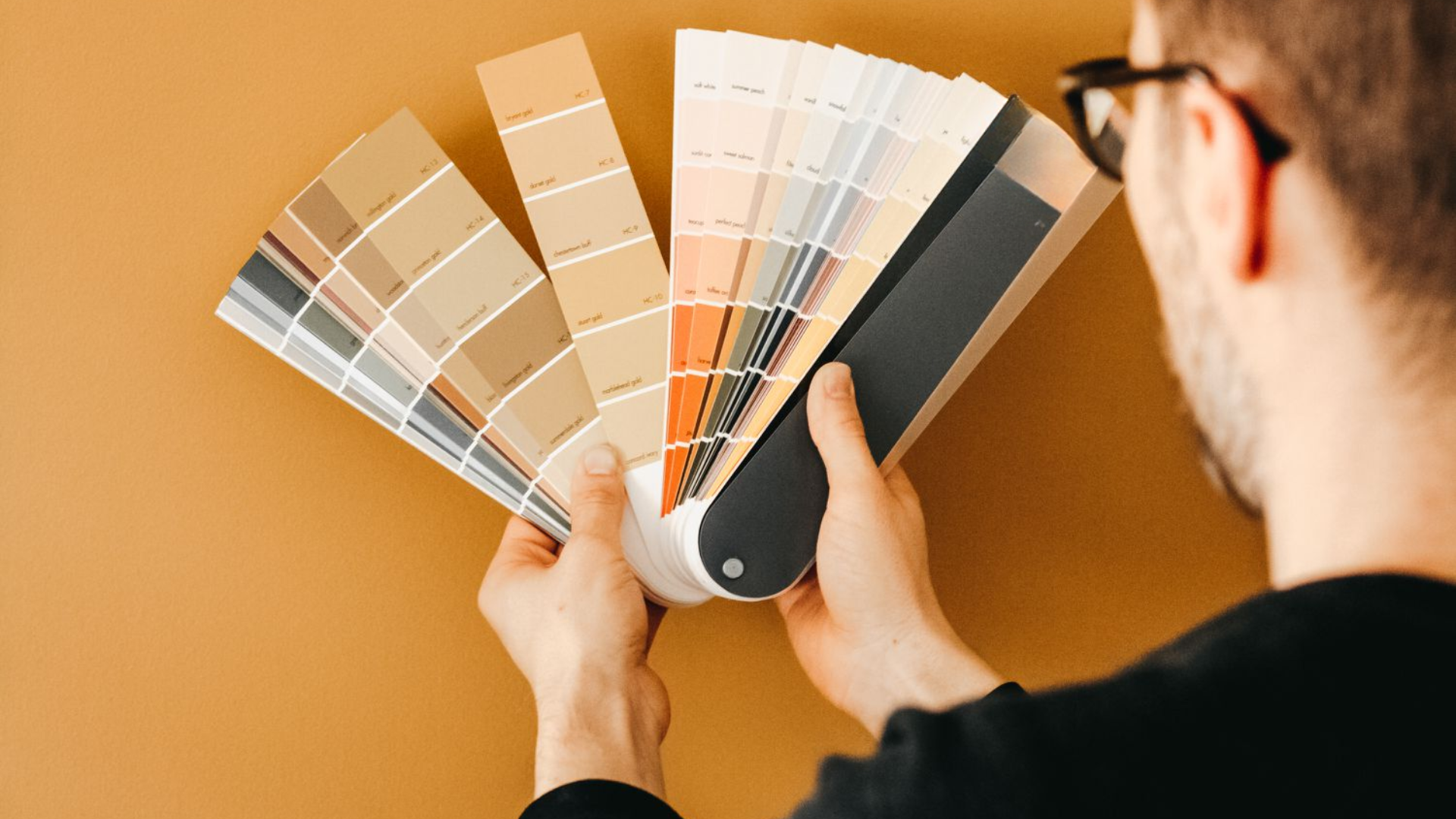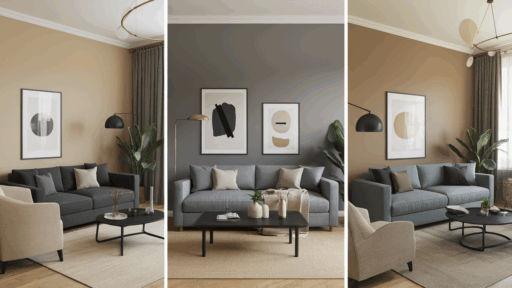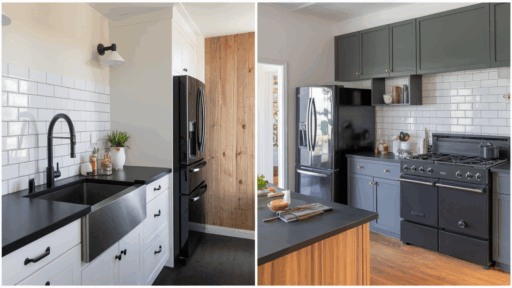Paint colors can significantly alter the ambiance of a room. Some create a calm, peaceful vibe, while others bring energy or warmth.
The right shade helps a space feel just right for how you want to live in it.
I know picking paint colors isn’t always easy. With so many options, it’s easy to feel overwhelmed or end up with a color you don’t love. That’s why I created this guide.
I’ll walk you through how to choose paint colors that work. You’ll learn simple steps to test shades, understand lighting, and use the color wheel.
I’ll also share tips on picking finishes and accent colors.
You don’t need to be a design expert to follow this. My goal is to help you feel confident and ready to make your rooms look and feel better.
Why Paint Colors Matter?

Paint does more than cover your walls; it shapes how you feel in a space.
A soft blue can help you relax, while a warm yellow might make your kitchen feel sunny and cheerful. Neutrals often bring a calm, balanced look.
Color affects how large or small a room feels. Light shades can make a space feel bigger and airier, while darker tones create a snug, cozy vibe.
The right paint pulls everything together: your furniture, lighting, and mood. It’s not just about looks; it’s about creating a space that fits your life and feels right.
A smart color choice can make a big difference in how a room works for you.
How to Pick the Right Paint Color
Below are three easy steps to help you choose the best paint color for any room.
Think About the Room’s Purpose
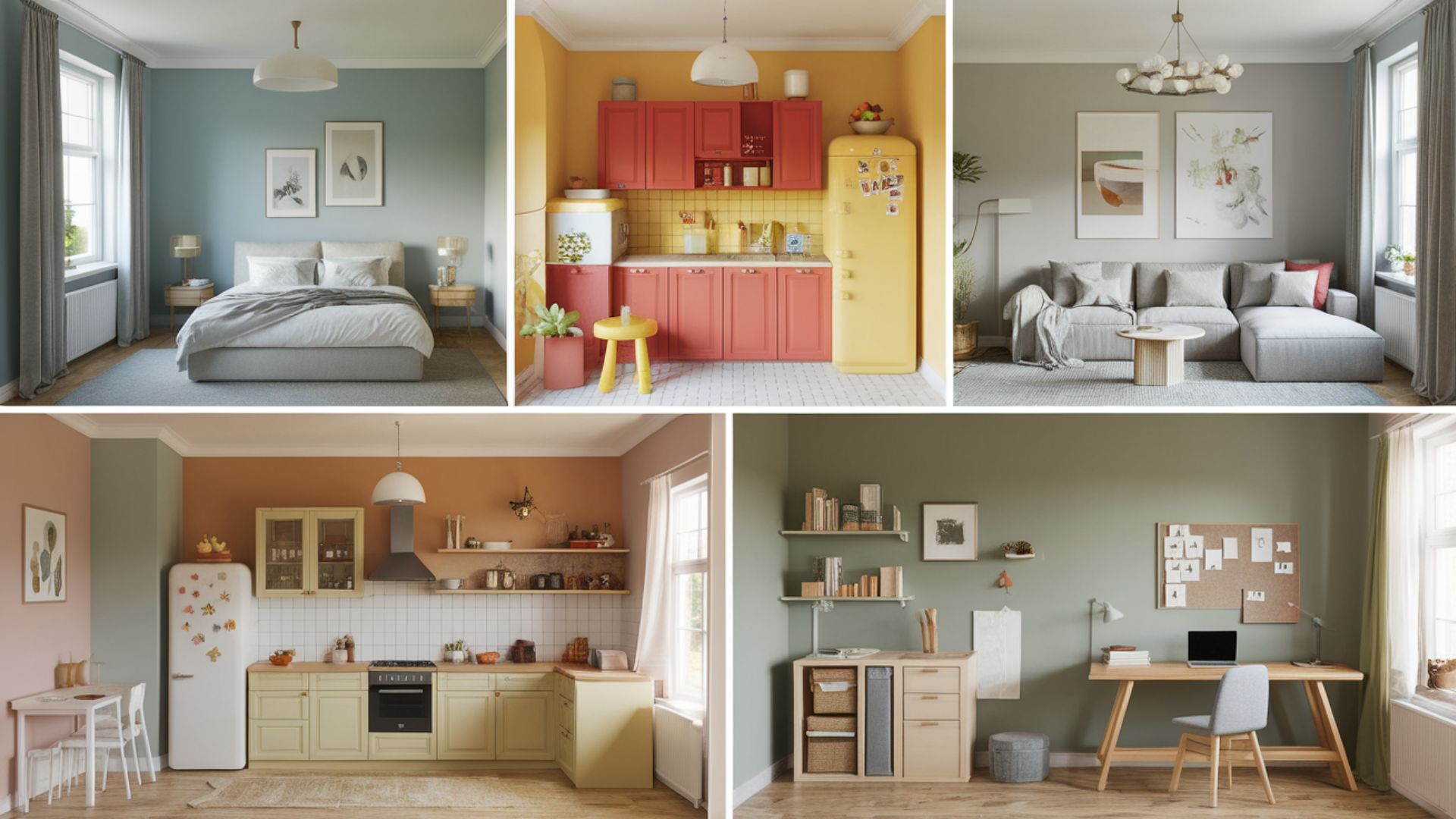
Before picking a paint color, consider how the room will be used.
Is it a place to relax, work, eat, or spend time with others? The color you choose should match the feeling you want in that space.
Soft blues, greens, or light grays work well for calm spaces like bedrooms. These colors help you unwind.
Warmer shades like yellow, orange, or red add energy and cheer in kitchens or playrooms.
Living rooms often serve many purposes, so neutral tones like beige or soft gray keep things flexible.
Matching the color to the room’s purpose makes the space more comfortable and inviting, helping each room do its job better.
Look at the Light
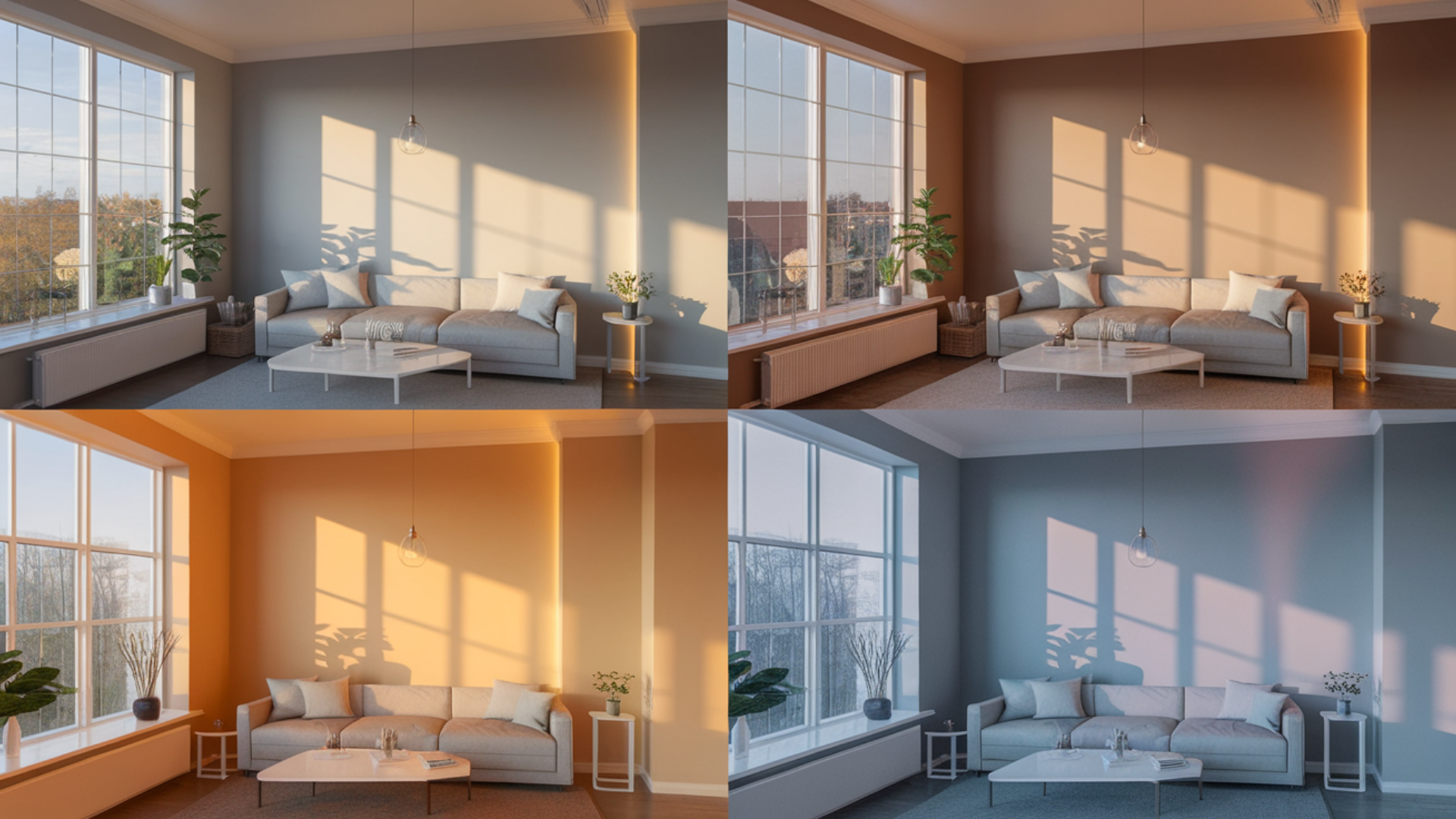
Light changes how paint colors look. Before choosing a shade, consider the amount of light the room receives and its quality.
Always test your paint choices in the room. Look at the color in the morning, afternoon, and evening. This helps you see how it changes throughout the day.
- Natural light makes colors look brighter and clearer. If your room gets a lot of sunlight, cooler tones like blue or gray can help balance the warmth. If the room is dark or has small windows, warmer and lighter colors—like cream or soft yellow—can make it feel brighter and more open.
- Artificial light: It also affects color. Some bulbs give off a warm glow, while others are cooler or neutral. The same paint can look different under each type of light.
Use the Color Wheel
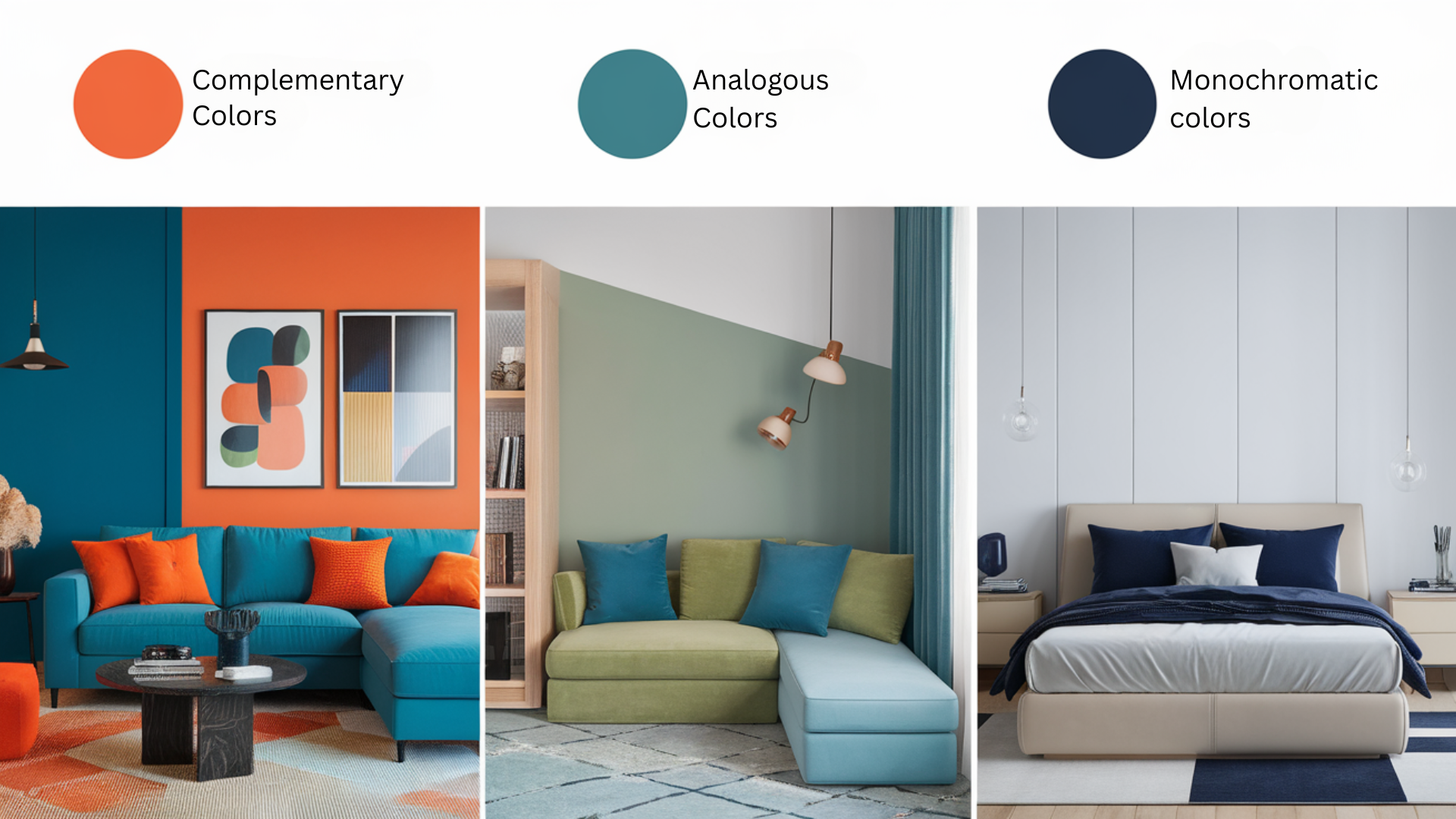
The color wheel is a simple tool for visualizing how colors work together.
It can help you decide on a color scheme and plan color combinations that look good and feel balanced.
- Complementary colors: They are opposite each other on the wheel. Think of blue and orange or red and green. These pairs create a strong contrast and can make a space feel bold and lively.
- Analogous colors: They sit next to each other, like blue and green or yellow and orange. These give a soft, blended look and work well in calm spaces.
- Monochromatic colors: Use different shades of the same color, such as light blue, medium blue, and navy. This keeps things simple and adds depth without mixing too many tones.
Choosing the Right Paint Finish for Your Room
Choosing the right finish for each room can help your walls stay looking fresh and make your paint job last longer.
1. Flat or Matte Finish

Flat or matte paint has no shine, giving walls a smooth, soft look.
It excels at concealing minor marks, dents, or uneven spots, making it a suitable choice for older walls or ceilings.
Since it doesn’t reflect light, flaws are harder to see. This finish works best in quiet areas, such as bedrooms or home offices, where the walls don’t require frequent cleaning.
2. Eggshell or Satin Finish

Eggshell and satin paints have a soft, shiny finish that gives walls a gentle, warm glow.
They aren’t too shiny but still reflect a little light, making a room feel cozy and bright.
These finishes are easier to clean than flat paint, making them ideal for areas such as living rooms, hallways, and dining rooms, spots where you want both style and easy upkeep.
3. Semi-Gloss or Gloss Finish
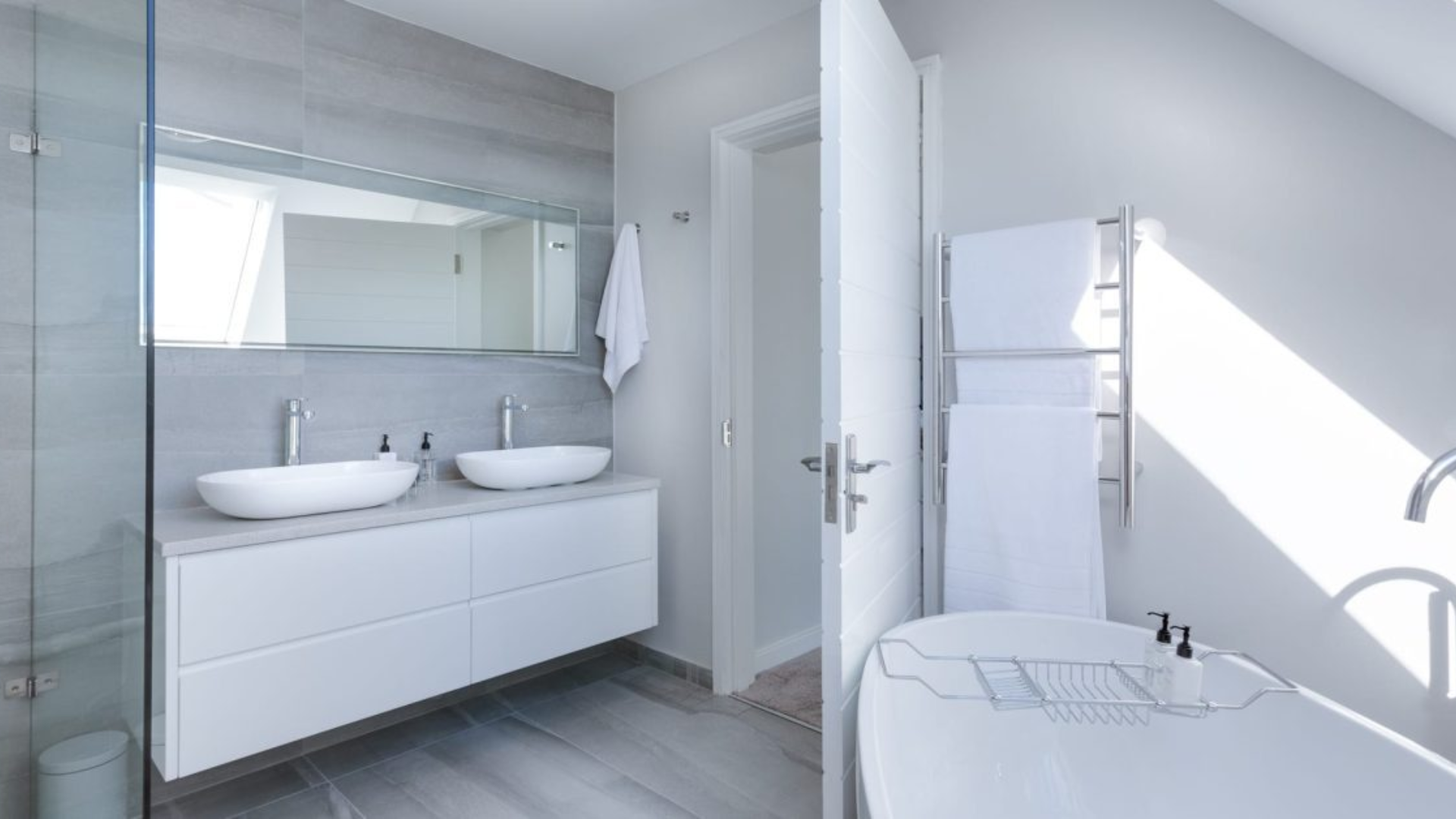
Semi-gloss and gloss paints are shiny, tough, and easy to clean. They withstand moisture, stains, and scrubbing well, making them ideal for busy or messy areas.
Use them in kitchens, bathrooms, on doors, trim, and baseboards, anywhere that gets frequently touched or splashed.
Just remember that the shiny finish can show scratches and dents more easily, so it works best on smooth, well-prepared surfaces.
Using Accents to Personalize Your Space
Adding accents is an easy way to express your style without doing a complete renovation. They introduce charm and detail without significant changes.
- Paint one wall in a standout color and keep the rest of the room neutral to create contrast and highlight a focal point.
- This approach works well in bedrooms, living rooms, and home offices.
- You can also update the look by adding color to furniture, doors, or shelves for a playful and creative update.
- Incorporate colorful pillows, rugs, curtains, or artwork to introduce style and personality without reaching for a paintbrush.
- These smaller elements are easy to swap out when you’re ready for a new appearance.
- Accent pieces allow you to experiment with color and flexibility. They help make a room feel more personal and reflect your individual taste.
Test Paint Colors Before You Commit
Trying out your paint color ahead of time is a practical step that can help you avoid mistakes. It lets you check if the color you like will suit your space and lighting.
- Try a Few Samples: Choose 2–3 paint colors that appeal to you and get small sample jars.
- Paint a Test Area: Apply each sample to your wall or a piece of white poster board. Make each test area large, at least 12 inches by 12 inches, so you can view the color accurately.
- Check at Different Times of Day: Lighting changes throughout the day. A shade that looks nice in the morning might appear different by evening.
- Test with Your Room’s Lighting: View your samples under the actual lights you use. Some lighting gives off a warmer effect, while others are cooler or more neutral.
- Compare with Your Decor: Place the painted sample next to items like furniture, floors, or curtains to ensure it blends well with the rest of your room.
- Wait a Few Days: Avoid making a rushed decision. Keep the test area visible for a few days and observe it from various angles and at different times.
Conclusion
Choosing paint doesn’t have to be hard. I start by thinking about how I want each room to feel: calm, lively, cozy, or bright.
I consider the natural light and my furniture to help make a decision.
Sometimes a blanket, painting, or even the floor color guides me to the right shade.
I always test paint samples on the wall first and watch how they look throughout the day. I don’t rush it because colors can change in different light.
Remember, this is your space. It should show your style and fit your life.
If you like soft neutrals or bold colors, there’s no wrong choice, only what feels right to you. Trust your eye, take your time, and enjoy picking the perfect color.


